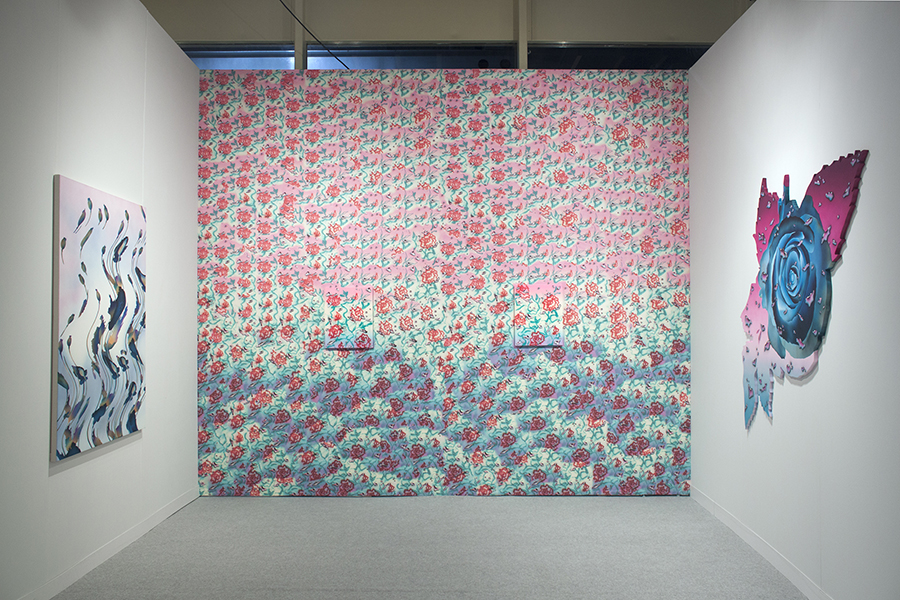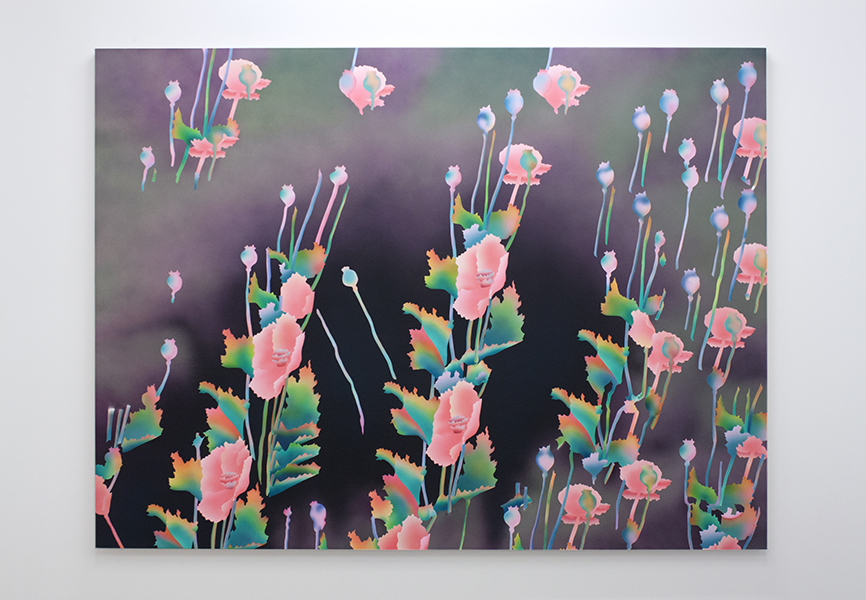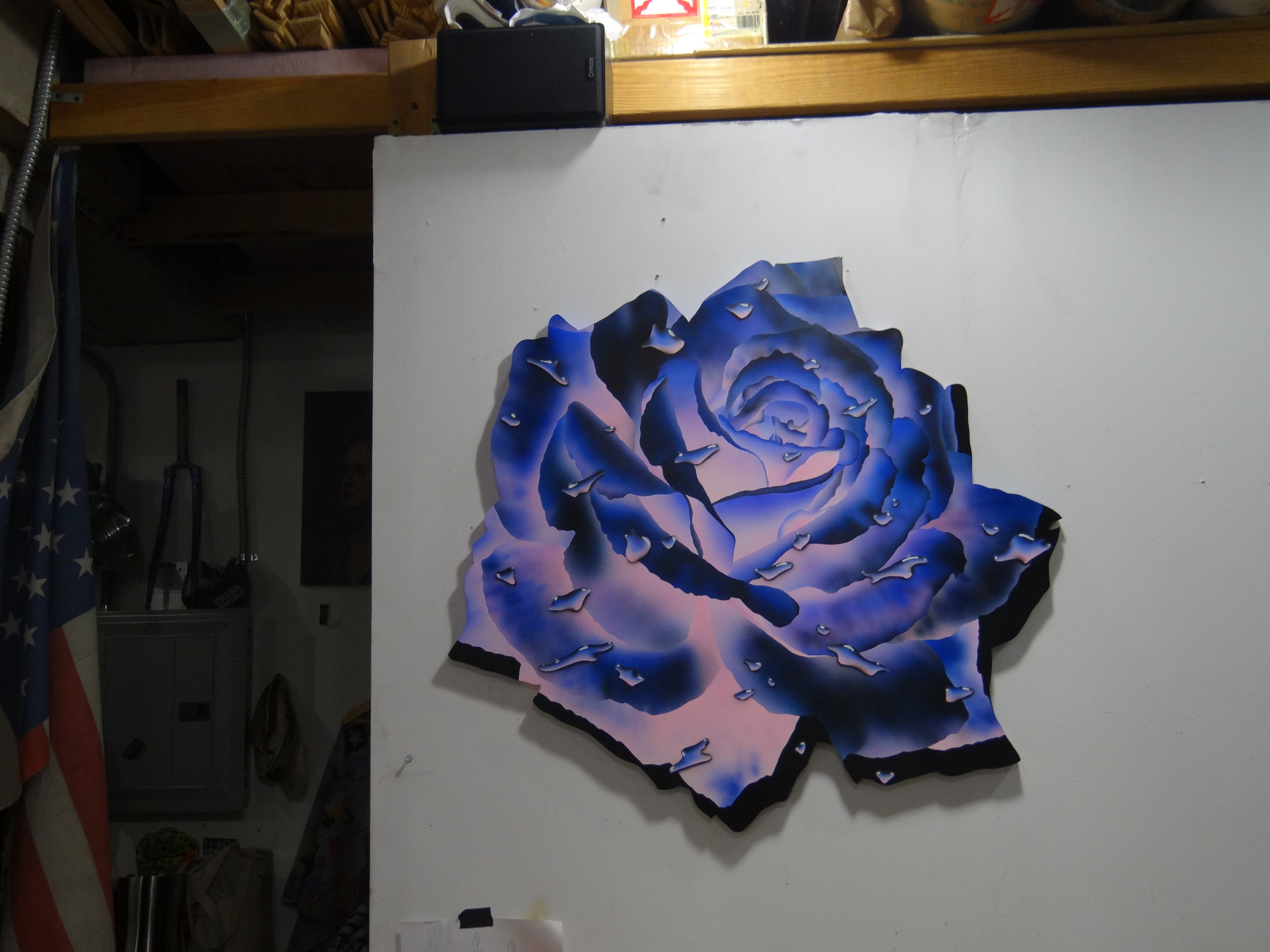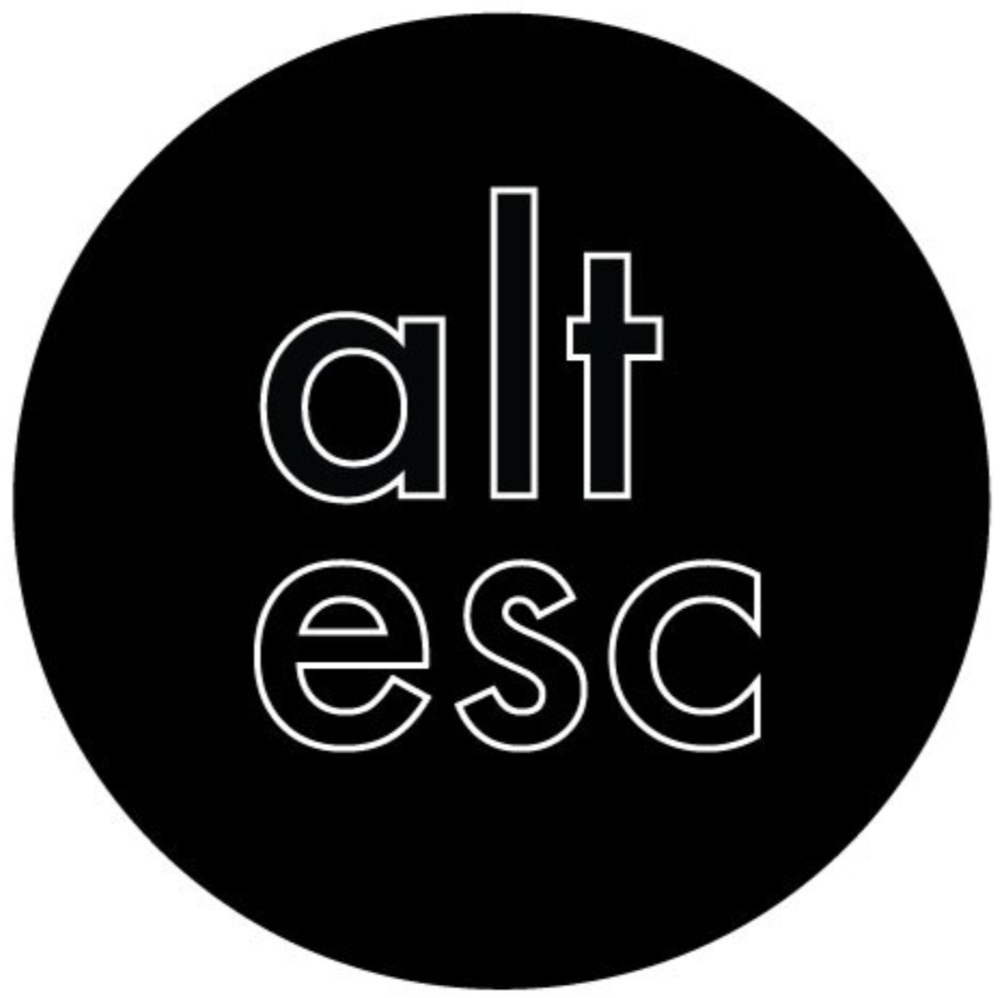Brian Willmont
Brian Willmont is an artist working in Brooklyn, New York. His paintings replicate digital imagery. Pulling from previous experiences in sculpture and video, his individual paintings composite into macro environmental installations. In addition to his painting practice, he runs and operates Terminal Gallery in Greenpoint, Brooklyn, which has exhibited over 200 artists.











What is Terminal Gallery?
Greenpoint Terminal is the gallery I started three years ago. It is in the front space of my studio. It really just happened organically. My old studio mate moved out. (He was in the front.) He was a sculptor and a little messy, so I couldn't rent the space - nobody wanted it. I decided I would clean it up, fix the walls, and sand the floor. Make it nice and do a few shows, while in the meantime trying to rent it out. I had had a few curatorial projects in the past. I put some shows together. I had a book project with Cody Hoyt called “The Apenest.” We published two books of 26 artists. I like building a community around myself. Or to rephrase, I like bringing people together. Artists have such a solitary practice, so it is really nice to get outside of myself every once in awhile and collaborate. The gallery ended up being a way to do that. After the first show, I decided immediately that I was going to keep with it. I got a good reaction from my peers, and I was excited about it. It was an easy decision. It is very low pressure. I like to have fun with it. It is an art project to me. I've worked with over 200 artists so far.
What are you working on in your studio now?
Right now I am working on two paintings. One is a commission. The other is a painting I am really excited and nervous about because it is going to take an extremely long time to know whether it will be any good or not.
Why is it difficult to tell if the painting will be any good or not?
It is two paintings on top of each other. The second layer is going to be painted transparently. I've never painted a transparent painting. I've never painted two paintings on top of each other. I'm about a month into these. It will take another two months to finish. Hopefully it will look just right. I think it will be awesome. I'm really excited about it.
What is your process?
In this new piece, it's all airbrush. It's all transparent colors. Nothing lines up. The layers are going to be a similar motif. To paint using transparent colors, you have to adjust everything. It takes a lot of restraint. I cover a white canvas in blue tape, and then I draw on the canvas. Then I cut the drawing out. Tape still covers the entire thing. Then I start taking away bits. It's all repetitive. At the beginning, I see most of the painting, and at the end, almost everything is covered in tape again. I can't see most of what I am working on while I’m painting. It is a sort of guessing game. I can’t see how the colors are going to affect each other until the very end. Sometimes there are little surprises like (in this piece) the orange that pops out.
Do you enjoy that element of surprise?
Yeah, definitely. That has always been a part of my process. I was a printmaker in school. I like to do things where I lay out rules for myself, but there is a freedom within those rules - places where those rules can lead to new possibilities. Possibilities that are outside of my intentions.
Spectral Visions, 2012
Gouache, enamel, acrylic, ink, burnt holes on paper, 58 parts, 84x204" (Image from artist's website)
You started out in printmaking, and I noticed you've also worked with sculpture. How has your creative practice and experience with different mediums evolved over time?
I started out in printmaking, and quickly I started working on paper (paintings on paper). Printmaking gave me a love for paper. I didn't feel like I needed multiples of anything, and I didn't feel like I needed to spend weeks on painting (which is ironic now because I'll spend months on a painting). I wanted immediacy. I wanted a lot of color (which would have taken forever in printmaking), and I wanted to make a lot of work. I wanted to make a lot of work because I like the way different pieces react against each other, and I've always thought of my work as a sum of parts. I enjoy the dialogue that happens between them.
Chaos and Wild Again, 2016
Victori + Mo, Brooklyn, NY (Image from artist's website)
When I made sculpture, it was based in installation or to construct video props. I made installations that were rooted in my drawings and paintings. It was very much about painting. I wanted the pieces to expand beyond just being objects on a wall. The sculptures would literally have elements that would come out of the paintings, existing with you in three-dimensional space. It was a two way street in and out. When I moved to New York, it became more difficult to hold onto sculpture. I was making things out of cardboard because I thought it was a material I could always just trash, but it's still hard to throw them away...As far as my paintings now are concerned, I am still thinking in the same terms. The paintings exist as props, sets, or installations, but there is less use of the 3-D object.
What’s the story behind those cardboard boots in your studio?
Those were marching through a field of paper flowers across a gallery floor.
Were they for a video?
It was a western about a cowboy fighter pilot. I made guns. I made hats. I made costumes. I made a 26 ft. cardboard fighter plane (that I spent months on). We filmed the blue sky in the background and used it like a green screen. It caught on fire a few times during the filming. We were using fireworks to have desert shootouts.
Where was this?
This was in New Mexico.
Did living in New Mexico inform your work?
Yeah, definitely. I think that it gave me more of a sense of stillness that I wouldn't have otherwise. I always liked the meditative qualities in my work. I think it deepened it.
Can you talk about your recent solo work at Volta and 56 Bogart?
Those were both through Victori + Mo Gallery. They were two separate shows but felt like extensions of the same show because they were happening at the same time. It was really great to extend a show over two spaces because I often have a hard time editing and tend to be over stimulating. This was a good opportunity to have exhibitions that were very bold and more minimal. Each show had four pieces.
When did you get into wallpapering?
Then. I had been thinking about it a lot. Victori + Mo Gallery owns a frame shop that has a large format printer. They had printed wallpaper before, so when I mentioned the idea they were like, "Oh! We can do that. That's easy." I have a lot of ideas that don’t go anywhere, but this time I mentioned it at the right time to the right people, so I got to pull it off! It was fun and bold. It took my work into a new direction.
The wallpaper was another great way to work back and forth between digital and analog (to take those concepts further). It's a constant theme in my work. There is a tension in both the way I paint and construct the image. Much of it comes from the original source painting, goes back into Photoshop, comes out a new drawing, and then goes back into Photoshop again. Different paintings evolve from the different steps. There is a constant flux between the digital and the analog.
Do you ever leave your work at the digital level?
I just showed one for the first time that was printed on silk. I have been playing with these digital images for years, and not all of them turn into paintings. The print down there is an example of that. It is also the basis for the silk piece I am showing at Orgy Park. I struggle with what to do with these digital images because it still feels weird for me to print out art - though I don't think it's weird for anyone else to do it! I think I let myself print on silk became it is a tactile material and moves the image into a more sculptural realm.
How did you get into airbrushing?
I took a graphic arts class in high school. This teacher set me up with the airbrush, and I started playing with it. She must have known that I was doing graffiti. I was making vectors of graffiti in illustrator. I abandoned it until a couple of years ago. Airbrush was a way to strip down the [spray paint] mark. It is very fluid, very soft with bright colors. I have always been attracted to commercial mediums and making plays on advertisements. I like that the airbrush has a technological aesthetic. The airbrush technique was used in antiquated illustration to portray visions of a sleeker, better, cleaner world. I’m interested in the lust of fulfillment and for searching for it through object validation, shopping, sex…It all feels very empty.
Untitled, 2015
Acrylic on panel
20x16 inches (Image from artist's website)
Was your work always centered around concepts of commercialism?
No, I think that came out of being in New York, and the time we live in now. I was a really late adopter of a smart phone. I put it off for a long time. In my social circle, I was late to Instagram. There is a ubiquitous way of looking through the world now. It’s like looking through a catalog. Everything is like or don’t like - right or left. It feeds off a mania that makes you a compulsive chopper of experiences. We all try to get the best deals and validation on our lives though these digital channels. In my paintings the droplets are symbols of seduction. They are all over advertising imagery - beverages, plumbing trucks, vending machines. They are a step further into that digital realm.
Learning to hold your breath, 2015
Acrylic on canvas
52” x 38” (Image from artist's website)
Can you tell me more about "Learning to hold your breath"? I'm curious about the narrative.
It was based on a vibe I was getting from watching "Suspiria." What do you see in it?
It's a little bit goth.
Around this time, I was thinking to myself that I make art for teenage girls.
Probably why it resonates with me so much.
We are all teenage girls somewhere deep within.
On that note, do you think about gender roles when you are painting?
There's always been something about me that flaunts gender bending, which is funny because that's not what I outwardly present. When I was a bike messenger, I had a bright pink bag and rode a pink bicycle. I was in Boston where people would constantly try to murder me and scream atrocities outside of their window. They literally tried to run me over because of it! That only made me want to wear it more. And I had really long hair too. I like being a little bit of a contrarian.





